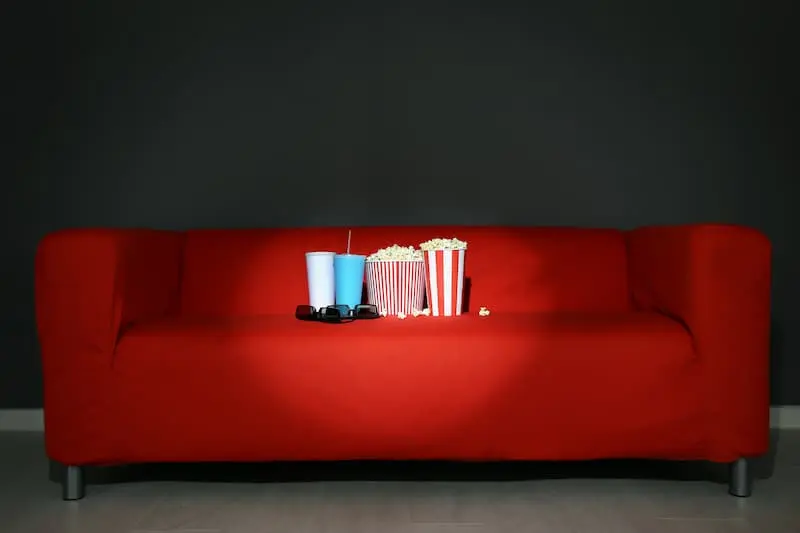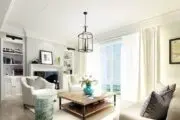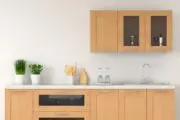Basement golf simulators are one of the hottest interior design trends, as homeowners look for creative ways to elevate entertainment experiences at home.
Golf simulators are not simply for golf training. Their design and components offer a wide variety of entertainment options for the whole household, as many systems come with multi-sport options.
At the core of the golf simulator operating system are a high-powered projector and a high-quality, wide impact screen that combine for an impressive, immersive entertainment experience. Add an audio system and the basement is destination fun.
A multi-purpose golf simulator is especially well suited for an open-concept basement, where defined zones create separate but connected spaces for various activities, making the most of a typically tighter footprint on the lower level.
When integrating a golf simulator into your basement design, what should your approach be, from functional planning to décor?
Multi-sport simulators have something for everyone
Many golf simulator packages come with multi-sport software, with built-in object tracking and motion tracking cameras, letting you throw, kick, pass, shoot and score.
In addition to golf, some of the most common sports and games include baseball, football, soccer, hockey, frisbee, dodgeball and more. It’s also popular to configure the simulator as a shooting range.
Homeowners have also been known to have a race car simulator, complete with a mock car to feed the need for speed.
Typically, a golf simulator is installed with a “high-end laser projector or a 4k projector, with upgraded HDMI cables. We also use a perforated screen system to allow sound through the back wall through the screen,” says Joe Neumeyer of Ace Indoor Golf.
This, along with acoustic tiles along the back wall and/or acoustic curtains, amplifies and sharpens the quality of sound, naturally lending the simulator environment for movies, gaming and more.
A curved screen heightens the immersive experience visually.
Homeowners may be keen to have a home theater or a media room, but may lack the space, or may not have an enclosed area that would be suitable. A simulator is a good compromise, especially in an open-concept basement floor plan.
In a basement area that does double duty as a home gym, you can stream fitness classes on the big screen, for an up-tempo, motivating workout.
Got a gamer in the household? A simulator is easily hooked up to the Xbox or PlayStation.
Keeping in mind these various functions, the space around the simulator has to be designed and decorated to facilitate activities comfortably and sensibly.
Determine function first to drive the design
Ultimately, design for the simulator and surrounding space will be determined by the primary objective.
Are you an avid golfer, looking to perfect your game in an all-season environment as part of your training program, or is it likely that the simulator will be used for various functions on a regular basis? Or both?
“Some customers are hardcore golfers, who practice at every opportunity,” to maximize training potential in pursuit of improving their game, says James Laidlaw of InHome Golf. These homeowners, according to Laidlaw tend to focus on functionality, around aspects such as swing clearance and space to accommodate a wide screen, and less on décor.
However, if the simulator is part of a social hub in the basement, or “if you want a more immersive experience, the details of the design,” carry greater importance, says Aaron Hawke of Simply Golf Simulators.
Neumeyer recommends that homeowners consider at the outset what they might use their simulator for, as the options are many, but functionality is amplified when objectives are identified.
“Most golf simulators can actually be multifunctional, if you have a big enough space, but typically we go through a design process at the beginning and learn what the customer wants. If they really want a theater, we would bring in an AV specialist or a home theater specialist,” to address acoustics and equipment, such wiring and speakers, he says.
Think about how many people might be in the area at one time for space planning, what types of activity are taking place, and what are the design details that best support those functions and overall aesthetic.
Lighting
Light is particularly important in a golf simulator space, regardless of its use, because of the role it plays in projection.
Homeowners need to have “certain control over lighting,” through dimmers or zone lighting on separate switches, says Hawke. Some tasks in a simulator area may require targeted lighting, but if the light is too direct or too abundant, “the projected picture quality won’t be as good,” he says.
Be mindful of the role of ambient light through windows. Depending on the placement, window coverings may be necessary to reduce light exposure towards the screen.
Seating
Whether a perch for putting on golf shoes, cozy space for movie watching, or somewhere for spectators to sit during the main event, seating is a major consideration in a golf simulator basement area.
Movable seating, such as beanbag chairs that can be tucked to the side or out of sight when not in use, are a quick and easy solution. These are good for gaming too.
Depending on space, put in a row or two of theater chairs with under-seat lighting. Or a modular sectional sofa is a good choice, especially if it has an ottoman or two, easily moved for extra space to lounge for movie night.
A popular design is to install a bar with stools adjacent to the simulator area, just behind the “golf green”.
Storage
To be most functional, the area around the simulator should be clutter-free, so that there is room to move safely and comfortably, which is where smart storage comes in.
For golf, hang clubs in racks on the walls, making use of vertical space. Alternatively, if storing clubs in a golf bag, opt for a combo bag storage/shelving unit where bags, clubs, shoes and balls can be contained in one place.
If the simulator is part of a home gym setup, ensure that there is adequate storage for smaller items such as bands, hand weights, yoga mats and balls out of the main area. Look at closed storage and a weight rack.
Flooring
In the simulator itself, turf is typically the flooring material of choice, but home golfers looking replicate a round on the course more authentically may extend the turf beyond the simulation area.
Otherwise, flooring generally transitions beyond the immediate simulator area to something functional and stylish, such as luxury vinyl plank, very popular in basements, or a sturdy Berber-style carpet, which provides warmth underfoot.
If a home gym is incorporated with the simulator, another type of flooring might be included, or rubber mats might be assembled in that space.
Make your simulator space extra
“If you want to dig into the golf training aspect of a simulator, add shift balance plates, a high-end camera to track your club, or a putting system that projects data on the floor,” says Laidlaw.
Here are some tips to elevate the overall entertainment value of your basement golf simulator:
- Create the 19th hole for after-game refreshments and lounging, in addition to barstool seating to watch the game. Have a full-size fridge, stocked bar and microwave or other small appliances for snacks.
- Include a pool table, poker table, ping pong table or vintage pinball machine.
- Opt for dark & moody paint colors, which not only are on trend, but help create the appropriate atmosphere for projection.
- Mount additional TVs on the walls, so your guests can watch the big game (or multiple games) while using the simulator.
- Put in a putting green to perfect your short game.
- Drive home the multi-sports theme with sports memorabilia décor.








